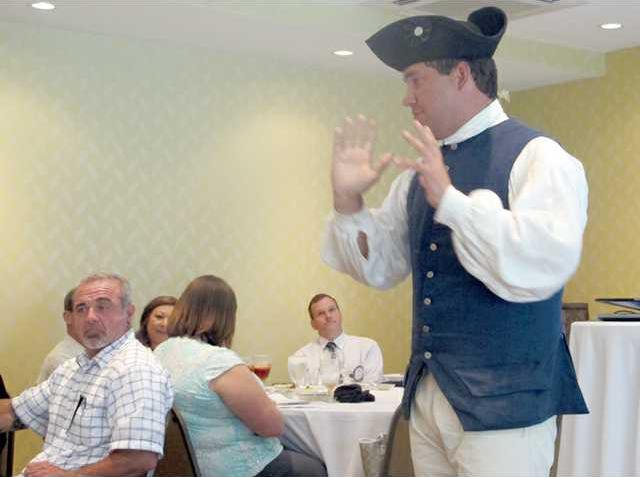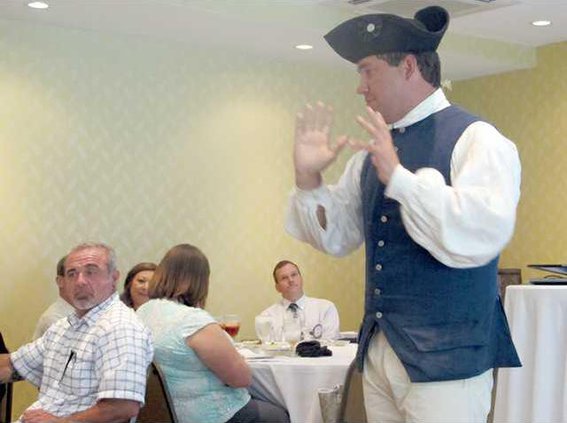History came to life for Hinesville Rotarians during a luncheon and meeting last week at the La Quinta Inn & Suites in Flemington.The guest speaker was a voice from the past — the distant past. Brian Carney, historic interpreter with the Coastal Heritage Society, portrayed Francis Higgins, a purported member of the Georgia Assembly. Higgins (a.k.a., Carney) said he had come to talk with the “good people of St. John’s Parish,” one of the three parishes that became Liberty County.The focus of his discussion was the recent duel of two prominent Georgia leaders, Button Gwinnett, a future governor and signer of the Declaration of Independence, and Brig.
History comes alive for Rotarians
Gwinnett, McIntosh duel described


Sign up for our e-newsletters